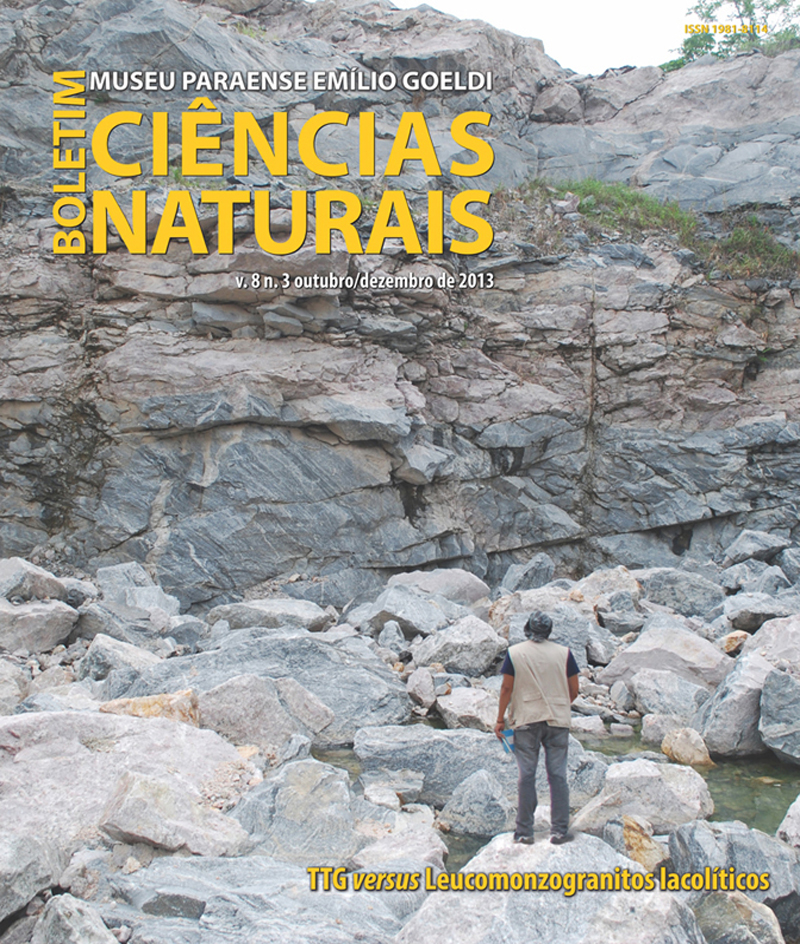Geology, petrography and geochemistry of Pantanal Leucogranodiorite and archean leucogranites of the area north of Sapucaia, Carajás Province, Pará: petrogenetic implications
DOI:
https://doi.org/10.46357/bcnaturais.v8i3.552Keywords:
Pantanal Leucogranodiorite, Calc-alkaline, A-type Leucogranite, Archean, Transition Subdomain, Carajás ProvinceAbstract
In the eastern part of the Transition Subdomain, leucogranodiorites (Pantanal Leucogranodiorite), apparently crosscut TTG rocks (Colorado Trondhjemite; ~2.87 Ga), and are crosscut by deformed leucogranites on its western portion. The peraluminous Pantanal Leucogranodiorite shows calc-alkaline affinities, with high contents of Ba and Sr. REE patterns are devoid of significant Eu anomalies and HREE are strongly fractionated. The high La/Yb ratios are similar to those of the Guarantã Suite (~2.87 Ga) from the Rio Maria Domain and suggest that the granodiorite magma was formed in the stability field of garnet (10-15 kbar). Its origin may be related to low degrees of melting of TTG, probably accompanied by interaction with fluids enriched in K, Ba and Sr, derived from a metasomatized mantle. The leucogranites have A-type geochemical signature, reduced character, and may have originated from the melt of dehydrated peraluminous calc-alkaline rocks during the Neoarchean. In the eastern portion of the Pantanal Leucogranodiorite stock was identified an oxidized hornblende-biotite monzogranite, geochemically akin of A-type granites, that is correlated with the Neoarchean Vila Jussara Suite. The results suggest that the studied portion of the Transition Subdomain was affected by crustal reworking during the Neoarchean and could represent an extension of Rio Maria Domain.
Downloads
Published
Issue
Section
License
Publication means fully assigning and transferring all copyrights of the manuscript to the journal. The Liability Statement and
Assignment of Copyrights will be enclosed with the notice of acceptance. All the authors must sign the document and return it to the journal.








